| Date | Text | |
|---|---|---|
30 Nov 1996

Food and Drug Administration |
Food and Drug Administration (medicine) Food and Drug Administration approval of daclizumab, the first humanized antibody therapeutic. |
|
30 Nov 1996

Ardley, Oxfordshire |
Ardley, Oxfordshire (paleontology) Megalosaurus and Cetiosaurus footprints are identified at Ardley, Oxfordshire, by Christopher Jackson. |
|
30 Nov 1996

Turing Award |
Turing Award (awards) Turing Award – Douglas Engelbart |
|
30 Nov 1996
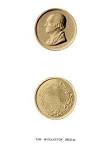
Wollaston Medal for Geology |
Wollaston Medal for Geology (awards) Wollaston Medal for Geology – Douglas James Shearman |
|
08 Jan 1997

Melvin Calvin |
death Melvin Calvin Melvin Calvin (b. 1911), chemist, winner of the Nobel Prize in Chemistry. |
|
15 Jan 1997

Kenneth V. Thimann |
death Kenneth V. Thimann Kenneth V. Thimann (b. 1904), English-American plant physiologist and microbiologist known for his studies of plant hormones. |
|
17 Jan 1997

Clyde W. Tombaugh |
death Clyde W. Tombaugh Died 17 Jan 1997 at age 90 (born 4 Feb 1906). Clyde William Tombaugh was an American astronomer who discovered Pluto, then known as a planet. He was 24 years old, working at Lowell Observatory, Flagstaff, Arizona, when he located it on 13 Mar 1930. He was comparing a photographic plate taken on 23 Jan 1930, with another made a few days later, and saw a star-like speck that changed position between them. Thus ended a decades-long systematic search instigated by the predictions of other astronomers. Tombaugh also discovered several clusters of stars and galaxies, studied the apparent distribution of extragalactic nebulae, and made observations of the surfaces of Mars, Venus, Jupiter, Saturn, and the Moon. Born of poor farmers, his first telescope was made of parts from worn-out farming equipment. Pluto was the only planet discovered in the 20th century, and the only one found by an American. |
|
17 Jan 1997
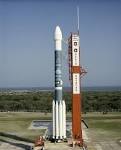
Delta II |
Delta II (astronomy and space ) Explosion of a Delta II rocket carrying a military GPS payload shortly after liftoff from Cape Canaveral. |
|
17 Jan 1997

Clyde Tombaugh |
death Clyde Tombaugh Clyde Tombaugh (b. 1906), astronomer, discoverer of Pluto. |
|
31 Jan 1997

Piyush Malhotra |
birth Piyush Malhotra Piyush Malhotra, cosmologist. |
|
13 Feb 1997
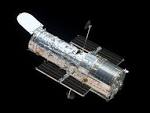
Hubble Space Telescope |
Hubble Space Telescope (astronomy and space ) Tune-up and repair work on the Hubble Space Telescope is started by astronauts from the Space Shuttle Discovery. |
|
22 Feb 1997

Roslin |
Roslin (biology) In Roslin, Scotland, scientists announce that an adult sheep named Dolly has been successfully cloned and was born in July 1996 |
|
23 Feb 1997

Cloned sheep |
Cloned sheep In 1997, the successful cloning of an adult mammal was announced: a female lamb named "Dolly" that was born 5 Jul 1996. The accomplishment of a group of scientists supervised by Ian Wilmut at Roslin Institute, Edinburgh, Scotland, was primarily the work of biologist Keith Campbell. Dolly was the first mammal ever successfully cloned from a cell from an adult animal. Using microscopic needles, scientists had replaced the nucleus of an egg cell with the nucleus from a parent udder cell. The resulting embryo was implanted into the womb of a third, surrogate sheep. Dolly's DNA was matched to show she was a clone. Dolly lived until 14 Feb 2003, when she was put down due to the effects of a progressive lung disease. |
|
27 Feb 1997

William Ross Maples |
death William Ross Maples Died 27 Feb 1997 at age 59 (born 7 Aug 1937). American forensic anthropologist who examined and identified the skeletons of a number of historical figures, including Tsar Nicholas II and other members of the Romanov family killed in 1918 by the Bolsheviks, Vietnam MIAs, conquistador Francisco Pizarro, and in 1994 helped convict Byron De La Beckwith of the 1963 murder of civil rights leader Medgar Evers. At the University of Florida, the C.A. Pound Human Identification Laboratory was created through Maples' energetic fundraising. This sophisticated, unique facility, dedicated to forensic anthropology opened its doors in 1986. Maples wrote Dead Men Do Tell Tales (1994, with Michael Browning). |
|
27 Feb 1997

Kingsley Davis |
death Kingsley Davis Died 27 Feb 1997 at age 88 (born 20 Aug 1908). American sociologist and demographer who was a world-renowned expert on population trends; he coined the terms population explosion and zero population growth and promoted methods of bringing the latter about. His specific studies of American society led him to work on a general science of world society, based on empirical analysis of each society in its habitat. Later, however, he came to be concerned about low birthrates in developed countries, fearing a shortage of educated leaders. |
|
04 Mar 1997
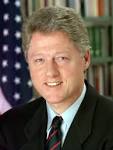
Bill Clinton |
Bill Clinton (biology) United States President Bill Clinton bars federal funding for any research on human cloning |
|
04 Mar 1997

Robert H. Dicke |
death Robert H. Dicke Robert H. Dicke (b. 1916), American physicist. |
|
07 Mar 1997

Edward Mills Purcell |
death Edward Mills Purcell Edward Mills Purcell (b. 1912), physicist, winner of the Nobel Prize in Physics. |
|
08 Mar 1997
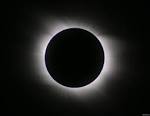
Complete solar eclipse |
Complete solar eclipse (astronomy and space ) Complete solar eclipse. |
|
24 Mar 1997

Partial lunar eclipse |
Partial lunar eclipse (astronomy and space ) Partial lunar eclipse. |
|
31 Mar 1997
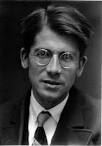
Friedrich Hund |
death Friedrich Hund Died 31 Mar 1997 at age 101 (born 4 Feb 1896). Friedrich (Hermann) Hund was a German physicist known for his work on the electronic structure of atoms and molecules. He introduced a method of using molecular orbitals to determine the electronic structure of molecules and chemical bond formation. His empirical Hund's Rules (1925) for atomic spectra determine the lowest energy level for two electrons having the same n and l quantum numbers in a many-electron atom. (1) The lowest energy state has the maximum multiplicity consistent with the Pauli exclusion principle. (2) The lowest energy state has the maximum total electron orbital angular momentum quantum number, consistent with rule (1). They are explained by the quantum theory of atoms by calculations involving the repulsion between two electrons. |
|
31 Mar 1997

Lyman Spitzer Jr. |
death Lyman Spitzer Jr. Died 31 Mar 1997 at age 82 (born 26 Jun 1914). American astrophysicist who advanced knowledge of physical processes in interstellar space and pioneered efforts to harness nuclear fusion as a clean energy source. He made major contributions in stellar dynamics and plasma physics. He founded study of the interstellar medium (gas and dust between stars from which new stars are formed). Spitzer studied in detail interstellar dust grains and magnetic fields as well as the motions of star clusters and their evolution. He studied regions of star formation and was among the first to suggest that bright stars in spiral galaxies formed recently. Spitzer was the first person to propose the idea of placing a large telescope in space and was the driving force behind the development of the Hubble Space Telescope. |
|
07 Apr 1997
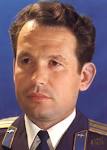
Georgi Shonin |
death Georgi Shonin Georgi Shonin (b. 1935), cosmonaut. |
|
12 Apr 1997

George Wald |
death George Wald Died 12 Apr 1997 at age 90 (born 18 Nov 1906). American biochemist who shared (with Haldan K. Hartline of the U.S. and Ragnar Granit of Sweden) the 1967 Nobel Prize for Physiology or Medicine for “for their discoveries concerning the primary physiological and chemical visual processes in the eye.” In the early 1930s, in research at Harvard University, he identified that vitamin A was present in the retina of the eye. This was the first discovery of a biological role of a fat-soluble vitamin. Later, Wald expanded Granit’s work on the red, blue and green retinal cones in the eye by establishing the biochemical basis of their sensitivity to different parts of the light spectrum. He was active in political causes such as speaking out against the Vietnam War, nuclear proliferation and the military-industrial complex, and refused to do research on poisonous chemicals for political ends. |
|
25 Apr 1997

Human artificial chromosomes |
Human artificial chromosomes (biology) Scientists announce that Human artificial chromosomes have been created. |
|
02 May 1997

John Carew Eccles |
death John Carew Eccles John Carew Eccles (b. 1903), psychologist, winner of the Nobel Prize in Physiology or Medicine. |
|
03 May 1997

Manuel Elizalde |
death Manuel Elizalde Died 3 May 1997 (born c. 1937). Philippine official and amateur anthropologist who in 1971 announced the discovery in Mindanao of the Tasaday, a tiny, primitive tribe living in isolation in the rain forest in such harmony there was no word for "war"; he was later accused of having perpetrated a hoax, and the controversy was never completely settled |
|
10 May 1997

earthquake |
earthquake (geology) An earthquake near Ardekul in northeastern Iran kills at least 2,400. |
|
11 May 1997

IBM |
IBM (computer science) IBM's Deep Blue defeats Garry Kasparov, the first time a computer defeated a chess grand master in a match. Deep Blue had defeated Kasparov before, but had never won a match against him. |
|
25 Jun 1997
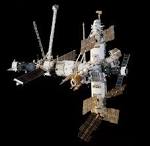
Space station Mir accident |
Space station Mir accident In 1997, the space-station Mir suffered a near-fatal mishap when a Progress ferry being docked via remote control by Russian cosmonaut Vasily Tsibliyev accidentally rammed into the Spektr science module, putting a hole in the pressure vessel and damaging its solar arrays beyond use. To salvage the station, which consisted of a core, a connecting node, and five science modules, crew members severed electrical and data connections between Spektr and the rest of the station and then sealed off the module. They saved the station but lost about half of their electrical power. |
|
25 Jun 1997
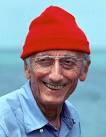
Jacques-Yves Cousteau |
death Jacques-Yves Cousteau Died 25 Jun 1997 at age 87 (born 11 Jun 1910). French naval officer, oceanographer, marine biologist and ocean explorer, known for his extensive underseas investigations. He was co-inventor of the aqualung which made SCUBA diving possible (1943). Cousteau the developed the Conshelf series of manned habitats, the Diving Saucer, a process of underwater television and numerous other platforms and specialized instruments of ocean science. In 1945 he founded the French Navy's Undersea Research Group. He modified a WWII wooden hull minesweeper into the research vessel Calypso, in 1950. An observation dome added to the foot of Calypso's bow was found to increase the ship's stability, speed and fuel efficiency. |
|
04 Jul 1997
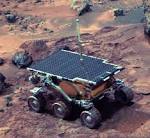
Mars Pathfinder |
Mars Pathfinder (astronomy and space ) Mars Pathfinder lands on the surface of Mars. |
|
04 Jul 1997

J. Z. Young |
death J. Z. Young J. Z. Young (b. 1907), zoologist and neurophysiologist. |
|
10 Jul 1997

DNA |
DNA (biology) In London, scientists report their DNA analysis findings from a Neandertal skeleton which support the out of Africa theory of human evolution placing an "African Eve" at 100,000 to 200,000 years ago |
|
18 Jul 1997

Gene Shoemaker |
death Gene Shoemaker Died 18 Jul 1997 at age 69 (born 28 Apr 1928). Eugene Merle Shoemaker was an American planetary geologist. Shoemaker initiated and vigorously promoted the intensive geologic training of the astronauts that made them able scientific observers and reporters on moon landings. He was a major investigator of the imaging by unmanned Ranger and Surveyor satellites which, before any Apollo landing, revealed the nature of the Moon's cover of soil and broken rock that he named the regolith. He codiscovered Comet P/Shoemaker-Levy 9 which collided with Jupiter (1994), the first observed collision of two solar system bodies. He died in a car crash. In tribute, a small capsule of his ashes were launched in a memorial capsule aboard Lunar Prospector to the moon. |
|
04 Aug 1997

Jeanne Calment |
death Jeanne Calment Jeanne Calment (b. 1875), oldest person in confirmed history. |
|
23 Aug 1997

Sir John Cowdery Kendrew |
death Sir John Cowdery Kendrew Died 23 Aug 1997 at age 80 (born 24 Mar 1917). English biochemist who shared the 1962 Nobel Prize for Chemistry (with colleague Max Ferdinand Perutz) “for their studies of the structures of globular proteins.” Perutz had determined the structure of hemoglobin. Kendrew worked out the structure of the muscle protein myoglobin, which stores oxygen and gives it to the muscle cells when needed. |
|
23 Aug 1997

John Kendrew |
death John Kendrew Sir John Kendrew (b. 1917), molecular biologist, winner of the Nobel Prize in Chemistry. |
|
24 Aug 1997
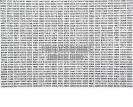
Largest prime number |
Largest prime number In 1997, Gordon Spence discovered the largest known prime number, 2^2976221 - 1, the 36th known Mersenne prime number. It took his 100-MHz Pentium PC fifteen days to prove it. At 895,932 digits in length, if printed out the number would stretch for 1.4 miles or if spoken 8 hours a day would take 28 days to complete. |
|
24 Aug 1997

Louis Essen |
death Louis Essen Died 24 Aug 1997 at age 88 (born 6 Sep 1908). English physicist who invented the quartz crystal ring clock and the first practical atomic clock. These devices were capable of measuring time more accurately than any previous clocks. He built a cesium-beam atomic clock, a device that ultimately changed the way time is measured. Each chemical element and compound absorbs and emits electromagnetic radiation at its own characteristic frequencies. These resonances are inherently stable over time and space. The cesium atom's natural frequency was formally recognized as the new international unit of time in 1967: the second was defined as exactly 9,192,631,770 oscillations or cycles of the cesium atom's resonant frequency, replacing the old second defined in terms of the Earth's motion. |
|
25 Aug 1997

Explorer 71 |
Explorer 71 (astronomy and space ) Launch of Explorer 71 of the Explorer program of spacecraft. |
|
01 Sep 1997
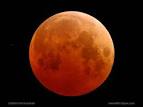
Total lunar eclipse |
Total lunar eclipse (astronomy and space ) Total lunar eclipse. |
|
02 Sep 1997
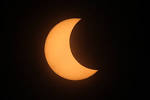
Partial solar eclipse |
Partial solar eclipse (astronomy and space ) Partial solar eclipse. |
|
04 Sep 1997
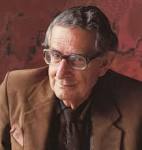
Hans Eysenck |
death Hans Eysenck Hans Eysenck (b. 1916), psychologist. |
|
07 Sep 1997
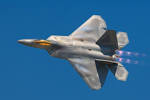
Lockheed Martin F-22 Raptor |
Lockheed Martin F-22 Raptor (aviation) First test flight of the Lockheed Martin F-22 Raptor fifth-generation jet fighter. |
|
15 Sep 1997

domain name |
domain name (computer science) The domain name for the web search engine Google is registered. |
|
15 Oct 1997

ThrustSSC |
ThrustSSC (technology) The first supersonic land speed record is set by the ThrustSSC team from the United Kingdom. |
|
23 Oct 1997
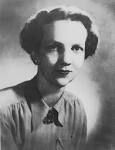
Helen Wright Greuter |
death Helen Wright Greuter Helen Wright Greuter (b. 1914), historian of astronomy. |
|
30 Oct 1997

ESA |
ESA (astronomy and space ) First successful test flight of the ESA's Ariane 5 expendable launch system. |
|
06 Nov 1997
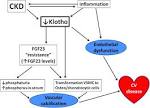
KLOTHO |
KLOTHO (biology) The discovery of KLOTHO is reported, a gene involved in human aging. |
|
19 Nov 1997

Des Moines, Iowa |
Des Moines, Iowa (biology) In Des Moines, Iowa, Bobbi McCaughey gives birth to septuplets in the second known case where all seven babies were born alive, and the first in which all survived infancy. |
|
23 Nov 1997

Lisa the Skeptic |
Lisa the Skeptic "Lisa the Skeptic" first broadcast as an episode of The Simpsons in the United States. |
|
27 Nov 1997
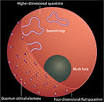
AdS/CFT correspondence |
AdS/CFT correspondence (physics) AdS/CFT correspondence proposed by Juan Martín Maldacena. |
|
09 Dec 1997
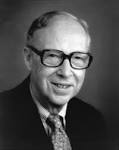
Karl August Folkers |
death Karl August Folkers Karl August Folkers (b. 1906), biochemist. |
|
17 Dec 1997

R. V. Jones |
death R. V. Jones R. V. Jones (b. 1911), physicist, expert in electronic military defence. |
|
26 Dec 1997
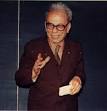
Cahit Arf |
death Cahit Arf Cahit Arf (b. 1910), Turkish mathematician. |
|
29 Dec 1997

Hong Kong bird flu |
Hong Kong bird flu In 1997, Hong Kong began killing its entire chicken population of up to 1.4 million birds to stem the spread of a mysterious avian flu that had already killed four people. The Hong Kong government decision came after birds at two sites were found to be infected with the H5N1 virus. Nothing, animate or inanimate, could be moved in or out of those two infected sites without permission. Birds at the territory's 200 chicken and mixed poultry farms were to be placed in sealed containers and gassed. Owners of close to 1,000 provision shops and market stalls were ordered to kill their stock. The disinfected carcases were sealed in plastic bags and buried at six landfill sites. The government compensated those whose stock was destroyed. |